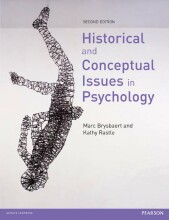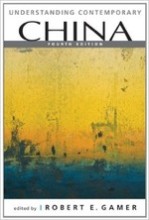Perception, knowledge and action in infancy
23 important questions on Perception, knowledge and action in infancy
How do we call the development of behaviors that relate to perception, attention, thinking, remembering and problem solving?
How do we call en internal description of an aspect of reality that persists in the absence of these aspects?
How do we call the ability to make fine discriminations between the elements in the visual array?
- Higher grades + faster learning
- Never study anything twice
- 100% sure, 100% understanding
How do we call the ability to focus on objects irrespective of their distance from the eye?
Describe the visual preference method.
- the baby is seated, or hold in an adults lap.
- the observer shows the baby a poster with two objects side by side on it.
- the observer observes the baby through the peephole between the objects
- measure how long the baby is looking at each object
- if one object is looked at longer than the other, there is a preference
- preference implies discrimination, otherwise the baby would look at both equally long.
Describe the acuity test with the visual preference method.
- the objects on the poster are a grey circle, and a black and white vertical striped circle.
- if there is a visual preference, discrimination is implied.
- if there isn't a visual preference this tells us there's no visual preference.
- so this tells us that the striped circle has become a grey blur which implies bad visual acuity.
Describe the habituation method.
- a child is seated to be shown objects or stimuli.
- the child is repeatedly shown the same stimuli over and over again
- habituation occurs
- until one point the child is shown a new stimuli
- if the child can discriminate the stimulus, dishabituation occurs, new interest is shown
- habituation and dishabituation is measured by fixation time, heart rate, sucking rate.
How do we call the size of an object as it is perceived, so considered actual size of the object plus distance of the object?
How do we call the illusion that is created when parts of an arrangement of objects are missing, creating the illusion of an object covering the objects?
How do we call the most typical example of a face, produced when many different faces are averaged?
How do we call a mechanism or ability that we posses from birth?
From a constructivists point of view, what causes perceptual development?
How do we call a world view that states that knowledge comes about through actively interacting with the environment, rather than passively forming mental representations of it?
If using a heart rate as dependent measure, what does a decreased heart rate tell us?
How do we call the ability to understand that even if an object is no longer visible, it continues to exist?
How do we call the object searching error where an object is hidden in one spot often, but when hidden in another, the infant will look in the initial place for the object?
Describe the violation of expectation technique.
- infants are shown two events.
- one event is consistent with everyday reality
- the other is inconsistent
- if the infant looks longer at the impossible event it will be because it violates their expectations
- tells us something about the infant's cognition
How do we call innate knowledge about the physical properties of objects, and basic knowledge about the world?
How do we call the ability to perceive directly the amount of items present instead of consciously counting them?
Describe Baillargeon's habituation test on object knowledge.
- infant were shown a 2 bridges that would stand on it's side and rotate 180 degrees back and forth (until flat, then go back), next to eachother
- shown until habituation
- then a box was placed behind the bridges
- one of them would rotate back and stop at the box, the other would keep on making the full 180 degrees
- infants would be expected to look longer at the bridge that didn't fully rotate since that was more novel
- but the infant were looking longer at the bridge that still fully rotated, (violation of expectation)
- shows knowledge of objects
Describe Baillargeon's habituation test on object knowledge with the truck.
- infants were habituated to a truck that would be rolling down a hill behind a screen.
- prior to the truck rolling doen, the screen was lifted to show an unobstructed track.
- after habituation two events were shown.
- in the possible event the screen revealed a truck that was behind it but not on the track.
- in the impossible event the screen revealed a truck that was on the track
- infants looked longer at the impossible event, shows object knoewldge
Describe the experiment by Wynn on counting with infants.
- with addition; an empty box was shown, a puppet is placed inside
- a screen goes up, and a second puppet is placed behind the screen.
- the screen is lowered to either reveal one puppet (impossible event) or two puppets (possible event).
- with subtraction; a box with two puppets is shown
- the screen goes up, after that one puppet is removed
- the screen is lowered to show either one puppet (possible event), or two puppets (impossible event).
- infants looked longer at the impossible event due to violation of expectation.
How do we call repeating a previously learned response, usually when it is no longer accurate?
The question on the page originate from the summary of the following study material:
- A unique study and practice tool
- Never study anything twice again
- Get the grades you hope for
- 100% sure, 100% understanding
































